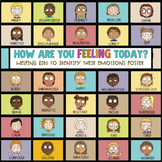 Implementing a behavior chart is a common practice of many educators when working with undesired classroom behavior. The use of a behavior chart can be classroom, group, or individually focused. Behavior charts might look like a color system or a level system, which identifies privileges for students who have achieved a level of the desired behavior and identifies lost opportunities for students who perform below set behavioral expectations. These types of charts can be useful when helping teachers and students visually understand how students are doing compared to behavioral expectations.
Implementing a behavior chart is a common practice of many educators when working with undesired classroom behavior. The use of a behavior chart can be classroom, group, or individually focused. Behavior charts might look like a color system or a level system, which identifies privileges for students who have achieved a level of the desired behavior and identifies lost opportunities for students who perform below set behavioral expectations. These types of charts can be useful when helping teachers and students visually understand how students are doing compared to behavioral expectations.
As educators continue to increase their knowledge regarding classroom behavior and individual student behavior and focusing on social-emotional learning, feelings charts are being considered and used in place of behavior charts. Here are some reasons why to consider using a feeling chart in place of a behavior chart:
- When students can identify feelings, they are more likely to develop self-regulation
- Feelings charts introduce emotional literacy
- Giving students the space to express feelings helps them feel respected, valued, and safe
- Educators tend to be more empathetic regarding behavioral challenges when understanding how the student is feeling
- Feelings charts might lead to more productive communication with others
- Feelings charts with suggested resources and activities can support students in working through their feelings, possibly reducing challenging behavior
- Behavior charts typically don’t help a student understand why they engaged in undesired or unexpected behavior
- Behavior charts tend to focus on punishment and can shame the student
- Behavior charts track behavior but don’t necessarily change it
- Behavior charts automatically assume a student will misbehave
- Behavior charts can increase anxiety, even for students who are always on green/behaving appropriately
